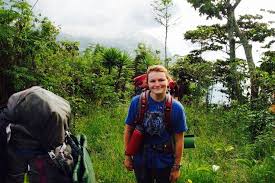Taking a gap year is an incredible opportunity for personal and academic growth, in addition, Latin America presents a unique setting for such an experience. The diverse landscapes as well as cultures and activities can provide a stimulating experience for those looking to go beyond the school. This article will help you be aware of concerning Gap Year in Latin America.
1. Program Options
Gap calendars across Latin America come in various forms, catering to different goals and interests. Volunteer programs are especially popular and allow participants to engage in various projects, from education and community development to environmental conservation. For instance, working on sustainable agricultural initiatives in Ecuador or helping schools within the community in Nicaragua can be rewarding and beneficial.
Language immersion programs are an popular alternative. Latin American countries offer a rich linguistic and cultural environment to study Spanish. Programs for Mexico, Guatemala, and Chile incorporate Spanish classes with activities that are cultural, like local celebrations, cooking classes and tours of the past, giving an extensive understanding of the region.
For adventure seekers, Latin America is a paradise. Gap year programs typically comprise activities such as trekking through the Andes or exploring areas like the Galapagos Islands, or surfing on the Pacific coast. These programs provide a blend of adventure and physical fitness frequently accompanied by educational aspects on the ecosystems of the region and conservation efforts.
2. Advantages of Spending a Gap Year in Latin America
The opportunity to spend a gap year with a family in Latin America can be incredibly beneficial. Personally, it fosters the development of oneself and helps to expose oneself to a variety of lifestyles. Participants often return with enhanced problem-solving skills, cultural sensitivity and self-confidence.
Professionally, a gap year can be an excellent add-on to resumes. The experiences and skills gained such as the management of projects, cross-cultural communications and adaptability are highly valued by employers and could help candidates stand out in jobs that are competitive.
3. Planning Your Gap Year
Effective planning is key to a successful gap year experience. Start by identifying your preferences and objectives, then select the right program to meet them. Doing some research, reading reviews, and talking with past participants will help in making a more informed choice.
Think about the implications to living in different country. Be aware of the visa requirements as well as health and safety considerations, and cost of living. Many programs offer support on these issues, however being proactive will facilitate an easier change.
Budgeting is an additional aspect that’s crucial. While some programs offer all-inclusive coverage, others may require additional expenses for travel and personal requirements. Explore scholarships or financing options to assist in reducing costs.
In conclusion the gap year experience in Latin America offers a rich variety of experiences that can dramatically impact professional and personal growth. Whether through volunteering, language learning, or adventure, the region’s numerous programs offer opportunities for exploration and growth. With careful planning and a positive outlook, taking a gap year in Latin America can be a transformational experience that will shape your future in unexpected and rewarding ways.
